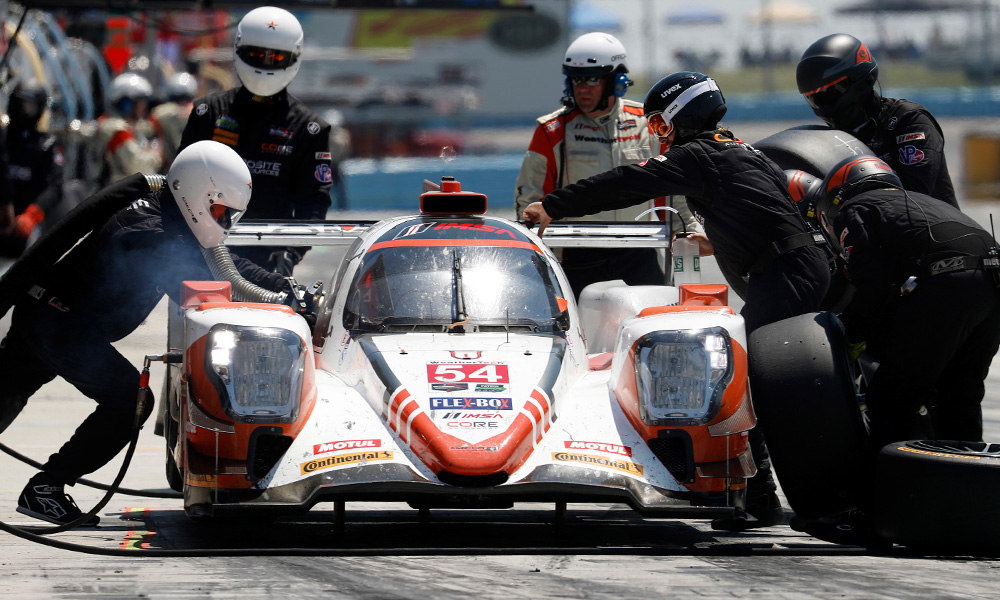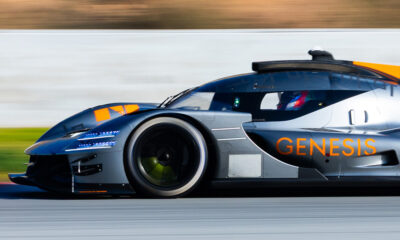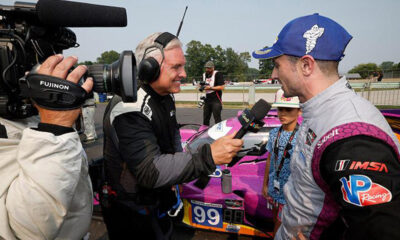
Photo: Mike Levitt/IMSA
A volunteer, after-hours simulation project has been among the creative initiatives that’s contributed to CORE autosport’s recent string of success in the IMSA WeatherTech SportsCar Championship, according to race engineer Jeff Braun.
The Rock Hill, S.C.-based squad claimed its first overall victory in the Prototype class in last weekend’s Mobil 1 Sportscar Grand Prix at Canadian Tire Motorsport Park, with the Pro-Am driver pairing of Colin Braun and Jon Bennett with its LMP2-spec Oreca 07 Gibson beating the mights of Acura Team Penske and reigning series champions Wayne Taylor Racing.
With back-to-back poles and podium finishes, CORE now sits fourth in the Prototype title race, ahead of both factory Penske Acura DPis and only at a 15-point deficit the championship-leading Cadillac DPi-V.R from Action Express Racing.
While operating with a sufficient budget for a top-level privateer operation, Braun believes they’ve been able to make further inroads on the factory competition by utilizing simulation software that’s typically not available to smaller-sized teams, such as CORE.
“At Level 5, we had the full might of Multimatic and their driver-in-the-loop simulator and Formula 1-level simulations,” Braun told Sportscar365. “So I know the benefits of that.
“But it’s expensive and you have to have a budget or an aerodynamics partner. Cadillac has Pratt & Miller, the Mazda guys have Multimatic and Penske has their own simulation in-house.”
The veteran engineer, who helped take Level 5 Motorsports to multiple ALMS titles, has gone with an outside-of-the-box approach for CORE’s simulation work, in utilizing a former F3 data engineer to run through his programs, all while some 4,000 miles away.
Braun said he first came into contact with Andrea Quintarelli, an Italian-born, German-based engineer several years ago, with Quintarelli now running CORE’s simulations in his free time on evenings after his day job with a major automotive company.
What started with some initial setup work with gearing in the build-up to the Mobil 1 Twelve Hours of Sebring has since expanded to more advanced simulations involving aerodynamics and ride height, according to Braun.
It came after the two worked closely together in developing Quintarelli’s vehicle dynamics model of the Oreca LMP2 car.
“We’ve got it fairly correlated so we’ve started using it more and more,” said Braun, who provides Quintarelli with a test plan in the same way he would in an actual on-track session.
“After every session, [he’s asking for feedback] and I say, ‘What do you think about this?’ He’ll then go jump on the simulator and have an answer by the morning. He then sends me an answer.
“We haven’t gotten to the point where I can say it’s a huge benefit and a big performance advantage. But it’s helped me get to where I need to be a little sooner by helping eliminate things that [won’t work].
“As simulations are, the more data you have, the better the model and accuracy gets and the more you trust it. We’re in that process right now of getting it ramped up.”
In a level of 1 to 10 in the sim work’s effectiveness, Braun said they’re currently at ‘about 3’ but envisions more gains to be made before the end of the year, which could result in further improvements on the track.
Either way, Braun sees Quintarelli’s work, done as a labor of love, as one of the team’s creative approaches to making the most out of its available resources.
“This is the kind of thing we’ve been going through [on the entire team]… to see where our weaknesses are, try to see how we can overcome those weaknesses,” he said. “We’re not complaining about it, we’re just trying to find ways to get better.
“We’re up against big factory teams and we’re cool with that.
“We don’t expect to win every race or be the fastest car or any of that. But I’m not going to lie, it does feel good when you can be quicker than those guys that have more resources.
“To do that we have to try to be smarter. Maybe not [always] smarter than them, but smarter than ourselves from the week before. It’s fun.”
























